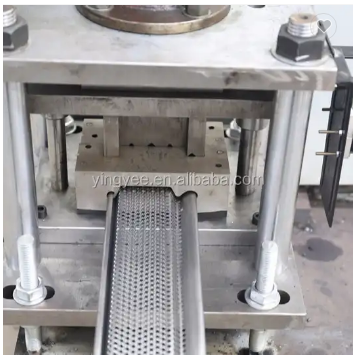
Metal Curving An Art and Science of Precision
Metal curving is a vital process in various industries, from automotive to construction, where precision and aesthetic appeal are paramount. This technique involves bending, shaping, and molding metal to achieve specific designs and functionalities. With advancements in technology, metal curving has evolved, integrating traditional craftsmanship with modern machinery, thus increasing efficiency and accuracy.
One of the primary methods of metal curving is through the use of CNC (Computer Numerical Control) machines
. These machines allow for high-precision bends that can be replicated with minimal error. They operate using computer programming to control the machinery, making it possible to produce intricate designs that were once difficult to achieve by hand. This is particularly beneficial in industries where consistency is crucial, such as in the production of automotive frames or structural components for buildings.Another popular technique involves rotary draw bending, where metal tubes and profiles are curved using a die and a mandrel. This method ensures that the internal structure of the metal maintains its integrity, thus preventing deformation within the bend. It's especially important in applications like piping systems or automotive exhausts, where flow characteristics must remain optimal.

Metal curving is not limited to industrial applications; it is also widely used in artistic fields. Sculptors and designers often employ metal curving to create stunning installations or functional art pieces. The beauty of curving lies in its ability to transform raw, rigid materials into fluid and dynamic shapes. Artists leverage the interplay of light and shadow caused by curves, enhancing the visual appeal of their works.
Another aspect to consider is the type of metals used in curving. Common choices include aluminum, steel, and copper, each with distinct properties. Aluminum, for instance, is lightweight and corrosion-resistant, making it ideal for both artistic and functional applications. Steel, on the other hand, offers strength and durability, which is crucial in construction and automotive industries.
Moreover, sustainability plays an increasingly important role in metal curving processes. Many manufacturers are now utilizing recycled metals, reducing waste and supporting a circular economy. This ecological consciousness aligns with global efforts to minimize environmental impact, making metal curving a choice that is both innovative and responsible.
In conclusion, metal curving is a multifaceted process that combines art and science. Its applications span various industries, contributing to both practical solutions and creative expressions. As technology continues to advance, the possibilities for metal curving are limitless, promising exciting developments in the years to come. Whether in crafting everyday objects or monumental installations, metal curving remains a testament to human ingenuity and craftsmanship.